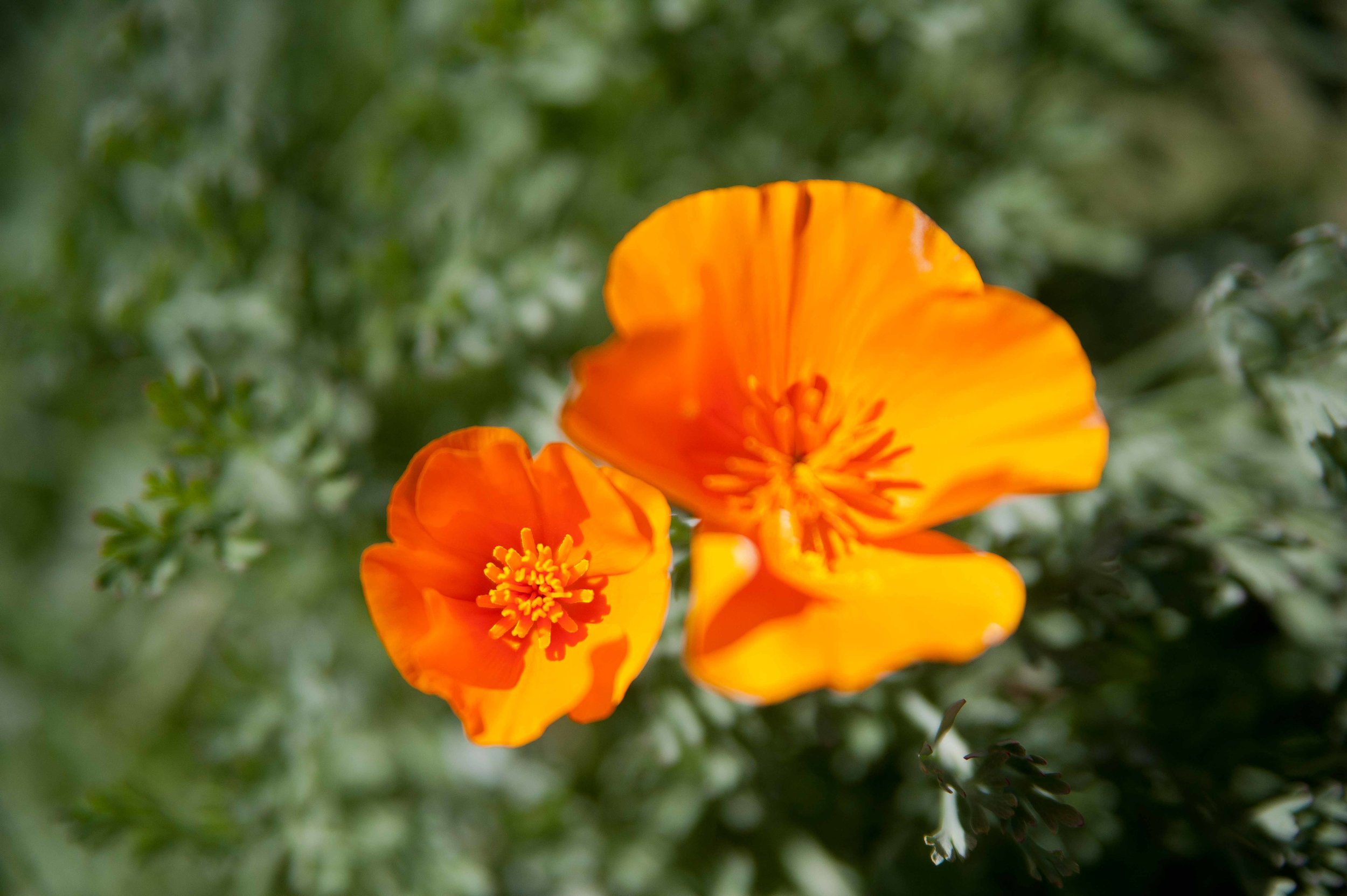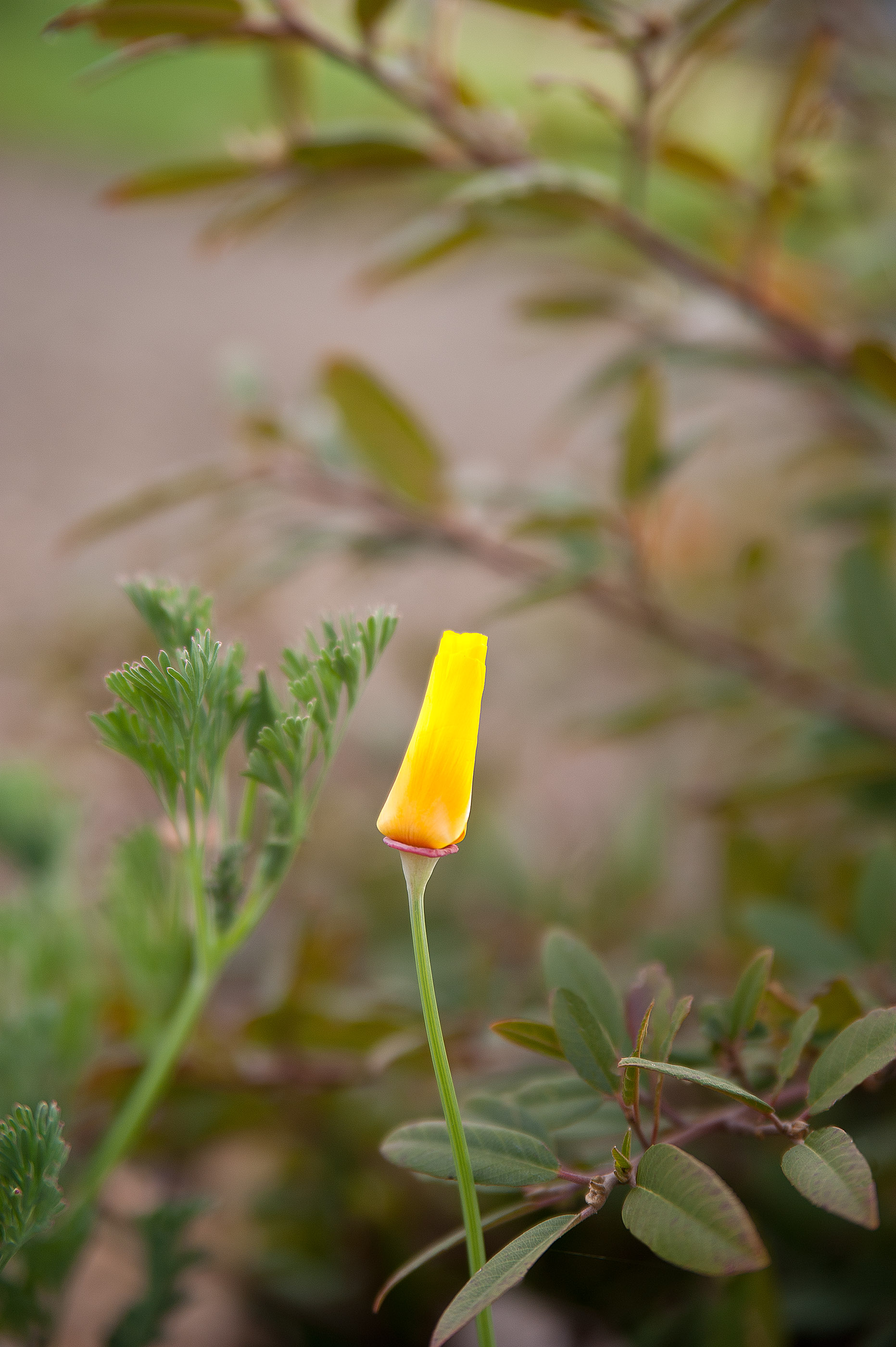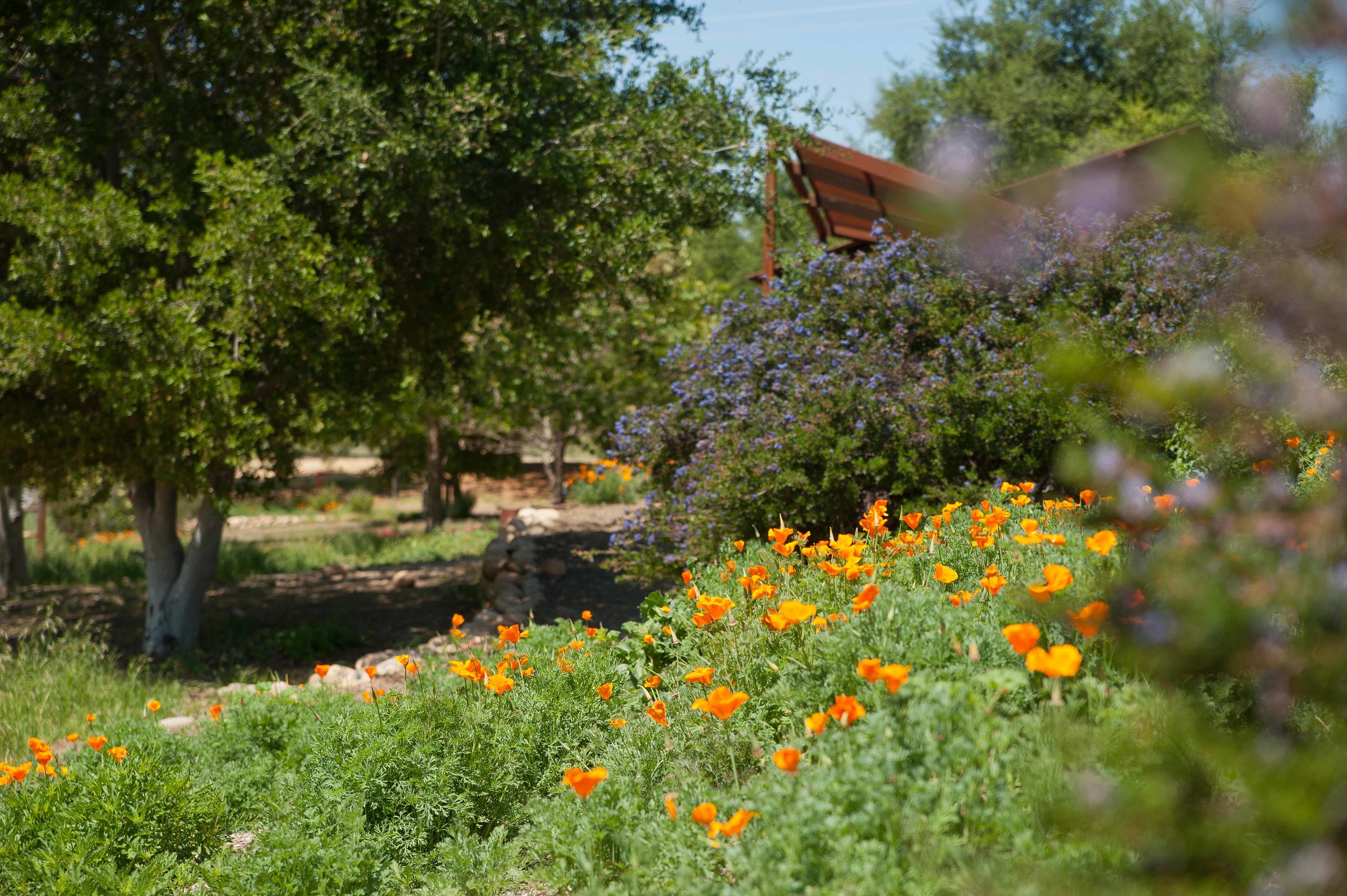Eschscholzia californica
California Poppy, Copa de Oro
The California Poppy is a member of the Papaveraceae family. The Poppy family consists of 42 genera and approximately 800 species. It is named for Johann Friedrich Von Eschscholtz; a German botanist who explored California in 1810. Eschscholzia californica became the official state flower in1902 beating out the Mariposa Lily (Calochotrus) and the Matilija Poppy (Romneya) for the Honor.
Description:
Eschscholzia californica is an herbaceous annual or biennial, 6 inches to two feet in height and spread. The leaves are blue- grey-green, glaucus and finely divided into linear segments. The leaves are primarily basal and attach to a long thin carrot like taproot. The flowers have four bright orange silky petals 1 to 2 inches long and bloom from February through September. The flower has numerous stamens and 1 pistil attached to a superior ovary. The flowers close at night or in windy conditions to help conserve water. The seed pod is a single chambered linear tube; 1 ½ to 3 inches long and 1/8 inches in diameter, containing 50 or more seeds. The seeds are round, dark brown to black in color and less than a thirty-second of an inch in diameter.
Habitat:
Eschscholzia californica is native to the Western United States and Northern Mexico from sea level to 6000 feet of elevation. It is commonly found in large colonies in open meadows and hillsides. It is tolerant of most soil types, but prefers well drained loam and full sun.
Uses:
California Poppy leaves and roots contain several useful medicinal compounds in the form of alkaloids. The main alkaloids are Chelirubine, Sanguinarine and Macarpine; which are used as an Analgesic, Sedative and Antispasmodic. The seeds were also consumed by Native Americans as a source of protein.
There are several other species of Eschscholzia native to California.
E. caespitosa; Tufted Poppy. Tufted foliage and yellow flowers
E. lemmonii; Lemon’s Poppy. The leaves are whitish and pubescent.
E. minutiflora; Pigmy Poppy. The plant is less than 3 inches tall.
E. ramose; Island Poppy. The flowers are less than ½ inch in diameter.
–By Steven Schulz



